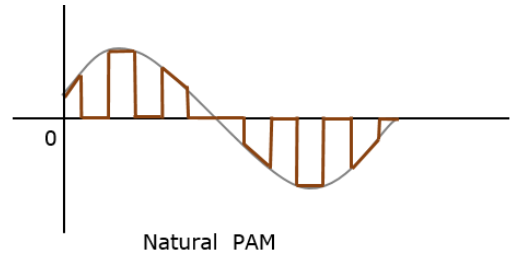Pulse Amplitude Modulation
Pulse amplitude modulation is the basic form of pulse modulation. In this modulation, the signal is sampled at regular intervals and each sample is made proportional to the amplitude of the modulating signal. Before we study in detail about PAM lets know the concepts of modulation.
Pulse Amplitude Modulation (PAM) is an analog modulating scheme in which the amplitude of the pulse carrier varies proportional to the instantaneous amplitude of the message signal.
The pulse amplitude modulated signal, will follow the amplitude of the original signal, as the signal traces out the path of the whole wave. In natural PAM, a signal sampled at the Nyquist rate is reconstructed, by passing it through an efficient Low Pass Frequency (LPF) with exact cutoff frequency


Though the PAM signal is passed through an LPF, it cannot recover the signal without distortion. Hence to avoid this noise, flat-top sampling is done as shown in the following figure.
Resource/s:
Analog Pulse Modulation. (n.d.). Retrieved from https://www.tutorialspoint.com/principles_of_communication/principles_of_communication_analog_pulse_modulation.htm.
No comments:
Post a Comment